Cairo Travel Guide
Cairo is a messy, noisy delight of a city that enchants visitors with its ancient treasures and challenges them with its modern riotousness. The 'Mother of all Cities' is full of great restaurants and thrilling archaeological sites, and is the doorstep to one of the most intriguing tourist destinations in the world.
Egypt is most renowned for its historical sightseeing and Cairo certainly doesn't disappoint in this regard. Ancient Egyptians left their mark on this region and their presence can still be felt through the pyramids, the sphinx and the Colossus of Ramses II. The city proper has more recent historical treasures and tourists shouldn't limit themselves to ancient relics. Old Cairo, also called Coptic Cairo, is the meeting place of three religions and boasts remarkable churches as well as synagogues and mosques. The Hanging Church is a favourite with visitors.
Cairo is well-situated for excursions to the Western Desert Oases and other ancient sites, which offer visitors a taste of the immensity and beauty of the Egyptian desert. The city is bursting with people, colours, smells and tastes, and travellers will be thrilled by the experience of the Egyptian markets and coffee houses, not to mention the mouth-watering array of quality restaurants in Cairo. For those keen to do a little late-night exploring, the nightlife is also worth investigating.
Best time to visit Cairo
Cairo is hot and dry all year and only has two seasons: a swelteringly hot summer between May and October, and a mild winter between November and April. The best time to visit is in the cooler winter months when the heat is less overwhelming. The nights can get cold in Cairo so visitors should bring something warmer for the evenings.
What to see in Cairo
-Spend a few hours, or a few days, in the Egyptian Museum of Antiquities.
-Explore the breath-taking Saladin Citadel with its many mosques, museums and wonderful views.
-Shop in the labyrinthine Khan al-Khalili market, one of the largest in the world.
-Visit the domed Coptic Church of St George in Old Cairo.
What to do in Cairo
-Take a ride around the famous Pyramids of Giza.
-Treat the kids to a tour of The Pharaonic Village.
-Visit the shining world of the Asfour Crystal Factory to shop for souvenirs.
-Take an excursion out to the ancient cities of Memphis and Saqqara to explore the temples and museums.
Beyond Cairo
Cairo is often the starting point of an Egyptian holiday and is a useful travel hub. Tourists can easily visit Alexandria on the nearby Mediterranean coast, and the numerous Red Sea resorts offer all the sun, sand and sea they can handle, as well as world-class diving destinations. The ancient treasures of cities such as Aswan and Luxor are accessible on the famous Nile River Cruises, which are a popular way of exploring the country.
Getting there
Cairo International Airport, the biggest airport in Egypt, is situated nine miles (15km) from Cairo. Flights to Cairo arrive from major cities all over the world. It takes about 45 minutes to reach central Cairo and visitors can take taxis, airport shuttle buses or public buses to get there. It's also possible to hire a car and a driver at the airport.
Did you know?
-Cairo is the second largest city in Africa.
-In Arabic Cairo is known as 'Al-Qahirah' which means 'The Triumphant'.
-The Al-Azhar University of Cairo is thought to be the oldest university in the world.
Things to do in Cairo
One only needs to look to the pyramids on the skyline to be reminded that Cairo's ancient attractions are part of the city's fabric rather than mere tourist exhibits.
The city has been attracting tourists for thousands of years, and the Pyramids of Giza, alongside the Sphinx, are some of the oldest and arguably most impressive attractions in the world. Travellers might think other attractions in Cairo would pale in comparison to these ancient treasures but they often find that some of the best sights in the city are more ordinary things, such as markets, coffee houses and places of worship. Not least among these is Khan al-Khalili, a central and much used market that gives visitors a chance to experience the city bazaar much as it was 700 years ago. Another is Old Cairo, an ancient Coptic Christian community from Roman times. Nearby these old churches, the 12th-century Saladin Citadel looms over Cairo, boasting a number of stunning mosques.
Tourists shouldn't discount the museums either, particularly the Egyptian Museum of Antiquities, which houses mummies and treasures from the tombs of the pharaohs. It should, however, be noted that this world-class museum is located on Cairo's notorious Tahrir Square, which is an interesting landmark and worth a visit but tends to be the main stage for the city's protests. Travellers would be well advised to avoid this part of downtown Cairo at times of political turmoil.
Tourists in Cairo often find that they are persistently pestered by touts at major sites. Hiring a reputable guide or joining a group tour helps mitigate this.
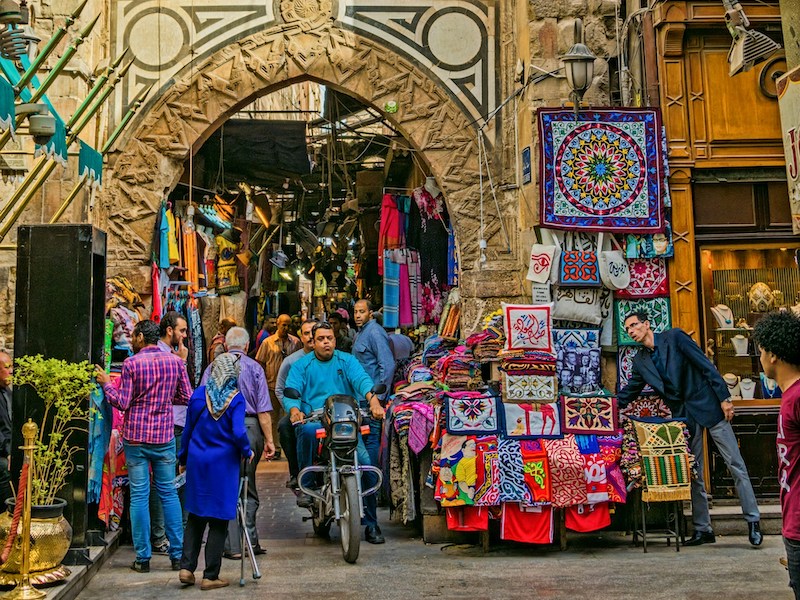
Khan al-Khalili
Buzzing with enthusiastic buying and selling, Khan al-Khalili is one of the largest markets in the world. Situated within Islamic Cairo, the World Heritage Site attracts travellers and locals alike. On the northern corner of the bazaar is the Mosque of Sayyidna al-Hussein, one of the holiest Islamic sites in Egypt. The market is the best place to soak up the colour of Cairo and to people-watch, and the streets themselves have charming arches, carvings and mosaics. Travellers will get many amazing photo opportunities wandering the labyrinthine little streets, though they must be wary of getting lost.
Traders have been bargaining in these alleys since the 14th century and it's possible to buy almost anything, from exotic perfume bottles to everyday Arabic clothing. There is, of course, a lot of junk as well but treasures and great bargains can be found. Visitors should be prepared to barter as the prices originally stated will always be much too high and the merchants expect them to negotiate. Although some of the traders are delightful others can get pushy and rude. Unfortunately, women travelling alone will almost certainly have to put up with a certain amount of harassment. No matter how many times travellers visit this vibrant market, they will always find something new and enchanting.
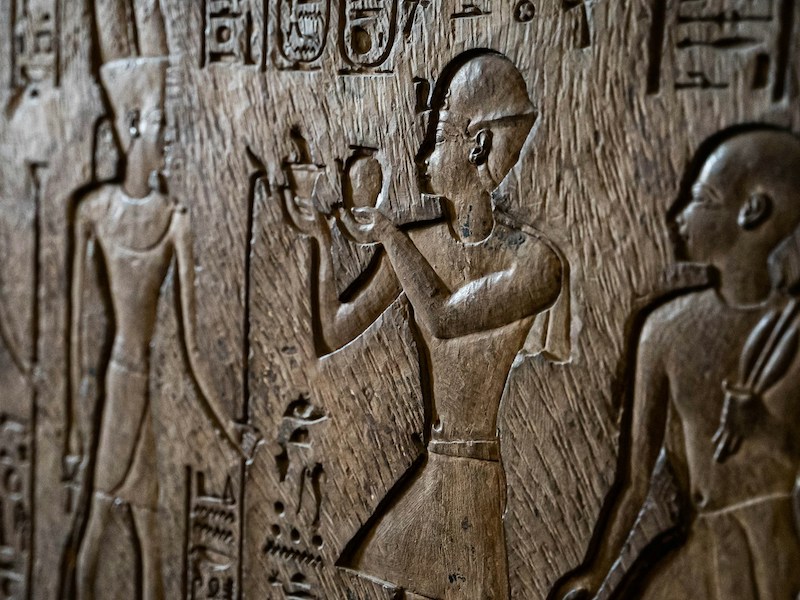
Egyptian Museum of Antiquities
With over 100,000 artefacts in 107 halls, the Egyptian Museum provides days of exploration. Inside, visitors will find treasures from ancient Egypt that include priceless finery taken from ancient royal tombs, as well as the statue of Khafre (Chephren), which is one of the museum's masterpieces.
The most popular attraction is the Tutankhamun Gallery, where exquisite treasures from the tomb of the iconic Boy King are displayed, including the famous solid gold death mask. Another top attraction is the Royal Mummy Room containing mummies of some of the most powerful Pharaohs in Egypt dating from the 18th to 20th dynasties. There's an additional cost for this room.
The museum also contains collections of artefacts such as coins, papyrus scrolls, scarabs and sarcophagi. There's a cafeteria, bank, post office, gift shop and library at the museum, and taped audio guides are available in English, French and Arabic. Visitors should be aware that photography is not allowed.
Although a trip to Egypt would feel incomplete without a visit to this incredible museum, its location on Tahrir Square means that foreigners must be cautious visiting during periods of unrest. If there are demonstrations on the square it's best to avoid the area.
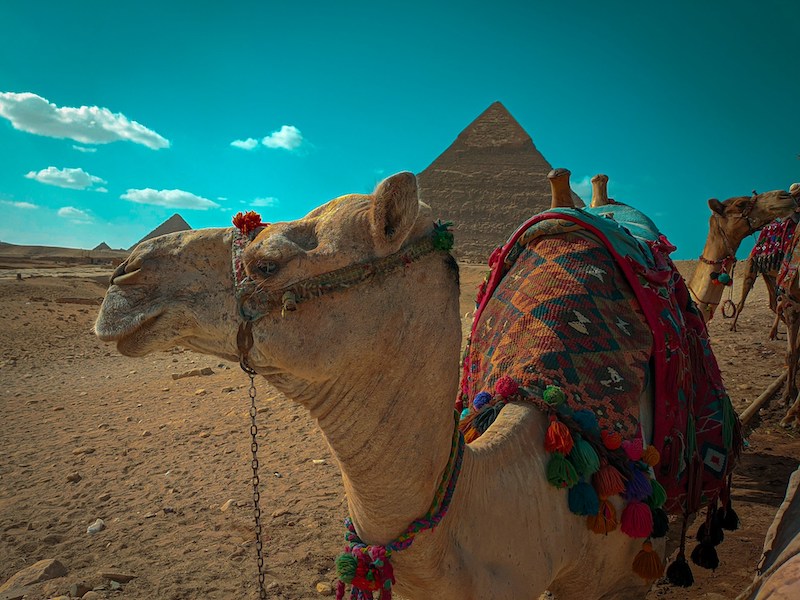
Pyramids of Giza
The pyramids are the earth's oldest tourist attraction and the Great Pyramid of Khufu (also referred to as the Great Pyramid of Cheops) is the only remainder of the seven ancient wonders of the world. Throughout history the pyramids have fired human imagination, with there being much speculation as to their origin and purpose. The most compelling theory is that they were built by the ancient Egyptian civilisation as tombs or great monuments in which to bury their kings and nobles; a place to start their mystic journey to the afterlife.
The oldest and largest pyramid, the Great Pyramid, is thought to have taken 20 years to build and is made of about two million blocks of limestone. No one knows how the two-ton blocks were moved into place, but it was known to be the tallest man-made structure in the world for over 40 centuries. The Great Sphinx, known as the Abu al-Hol (Father of Terror), stands in front of the Great Pyramid and is thought to be older than the pyramids themselves.
Tours of the pyramids are conducted by many tour operators in Giza. Access to the interior of the pyramids is restricted, and at least one is closed for renovations at any given period. While climbing the pyramids was once a popular activity, the practise has now been banned. The best time to visit the Pyramids of Giza is early in the morning, before the tour buses descend on them. While unofficial 'tour guides' lurk around the site to demand tips, better-informed guides can be booked in advance from Giza. It's often best for travellers to get their hotel's advice on guides.
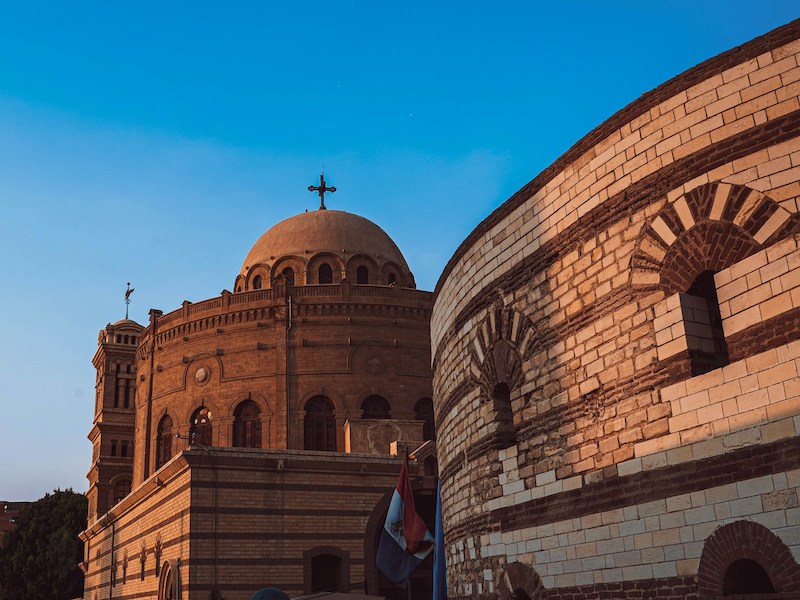
Old Cairo
Once known as the Roman stronghold of Babylon, Coptic Cairo is the oldest part of the city and the heart of the Coptic Christian community. Home to five original churches alongside Egypt's first mosque and oldest synagogue, these ancient walls house three of the major religions of the modern world in one special area. This peaceful place offers respite from the busy city centre and is a joy to wander around.
Churches of interest are the Al-Muallaqa (Hanging Church), the oldest Christian place of worship in the city, and St Sergius, where the Holy Family reputedly sheltered during their flight to Egypt. Visitors can take the metro into Coptic Cairo from Tahrir Square. It's useful to have a guide when exploring the area as there's so much history to discover and so much to see. However, visitors who chose to explore alone will feel the power and age of the place and should still be able to find all the major attractions.
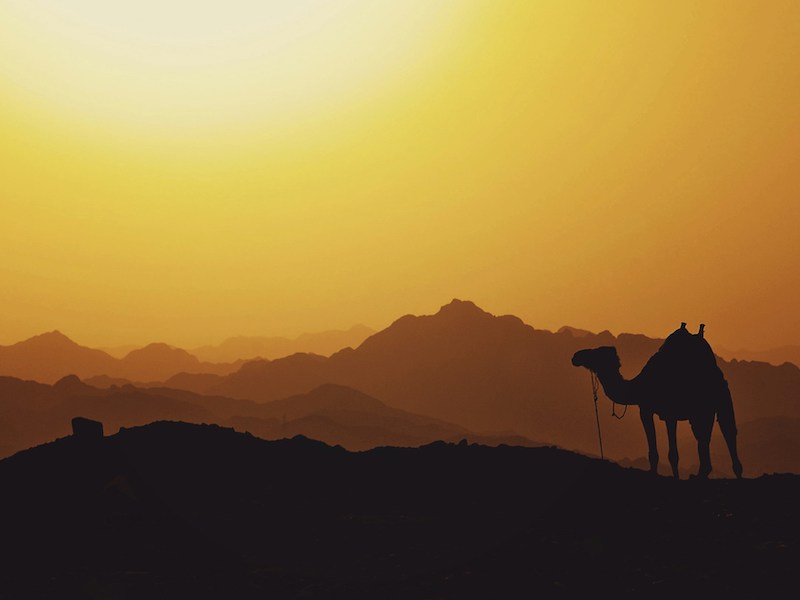
Western Desert Oases
From Cairo it's possible for adventurous travellers to enjoy Egypt's finest journey, the Great Desert Circuit. It runs for over 621 miles (1,000km) through spectacular desert landscapes and is punctuated by four oases, Bahariya, Farafra, Dakhla and Kharga, which are situated in a depression. The first two have hot springs and palm groves, with Farafra being the more traditional and rural of them.
To experience the remoteness of the desert travellers can spend an unforgettable night in the White Desert between oases. Dakhla and Kharga are surrounded by old ruins and villages from the times of the ancient caravan routes to Sudan.
The Great Desert Circuit is a fascinating journey and really allows travellers to grasp the enormity of the Egyptian desert and appreciate the history of exploration in the region. The roads are in good condition, with hardly any traffic on them, and the whole circuit can be done in anything between 16 hours and a week. Some of the oasis towns are lovely places to spend a night before resuming a road trip.
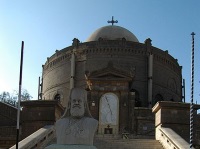
Coptic Church of St George (Mari Girgis)
The only domed church left in Cairo, the Greek Church of St George features a long set of steps that lead up to the church, where visitors will find a relief of St George and the dragon wrapped around the outer brickwork of the tower. The original church dated back to the 10th century, or earlier, but this ancient structure largely burned down and the current church replaced it in 1904.
For centuries, the church alternated between Coptic and Greek ownership but, since the 15th century, it has remained Greek Orthodox. The adjoining monastery of St George is now the seat of the Greek patriarch. Despite this, the Moulid of Mari Girgis, a large Coptic festival celebrating St George, is celebrated at the church each April.
The St George Church is most famous for its beautiful wedding hall (Qaat el Irsan), which dates back to the 14th century. St George was a warrior saint imprisoned and martyred near the church, which is built on an ancient Roman tower. Sadly, this wonderful building is often not included in tours of Coptic Cairo but it's well worth the visit and very easy to find. The church and monastery are visible from Mari Girgis Station.

Hanging Church
The Hanging Church in Cairo derives its name from its location on top of the southern tower gate of the old Babylon fortress, with its nave suspended over a passage. It's the most famous Coptic church in Cairo with the earliest mention of the church being a statement in the biography of the patriarch Joseph, who lived in the mid-19th century. It would become known to travellers as the 'staircase church' during the 14th and 15th centuries because of the twenty-nine steps that lead to the entrance.
The visual impact of the church's elevated position has been reduced due to the rise of land surface by around 20 feet (six metres) since the Roman period, not to mention the rise of tall buildings around it, but it's still an impressive and beautiful structure. The Roman tower it's built on remains mostly buried below ground. It's calm and peaceful inside and visitors are not pestered here as they may be at many other Cairo attractions. Among the highlights of the church are the intricate carvings and mosaics that decorate the walls, windows and doors.
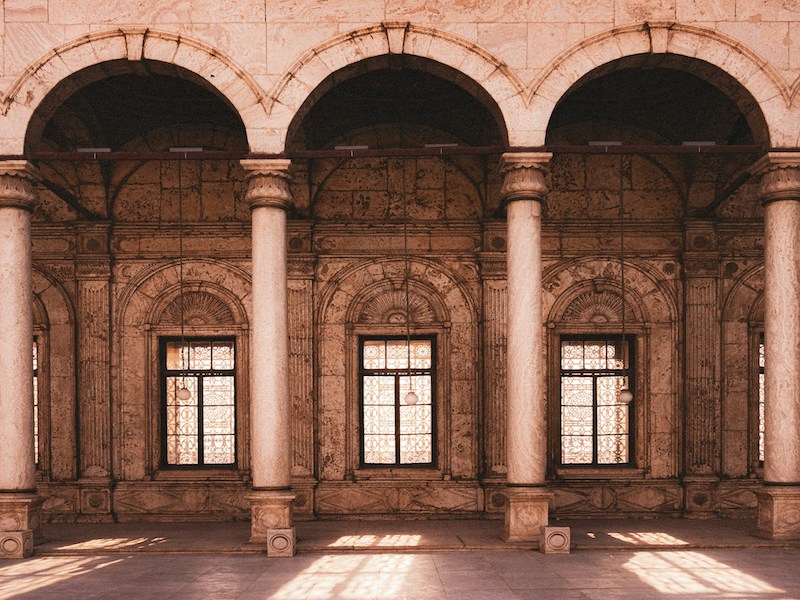
Saladin Citadel (Al-Qalaa)
The Saladin Citadel is a massive stone fortress set in a beautiful tropical location, and was built by Salah ad-Din in the 12th century. Visitors have the freedom to roam the castle, which remains in pristine condition, and which boasts incredible views of Cairo. Those who are lucky enough to visit on a clear day will be able to see all the way to the pyramids.
The execution room is particularly interesting but just wandering around this ancient citadel is fascinating. The Mohammed Ali Mosque (also called the Alabaster Mosque) crowns the citadel and this magnificent place of worship is the highlight of the fortress. It was built between 1824 and 1857 and modelled on the famous Blue Mosque in Istanbul.
There are two other mosques within the Citadel: the 13th-century Mosque of al-Nasir Muhammad, and the 16th-century Mosque of Suleyman Pasha. As always, women visiting the mosques must wear loose clothing and be prepared to cover up (there are scarves available at the entrance for this purpose if visitors do not bring their own). The Al-Gawhara Palace, National Military Museum and Police Museum can also be found inside the Citadel.

Ramses II Statue
Discovered in 1882 during excavations, the giant statue of Pharaoh Ramses II was cut into six pieces in the 1950s and moved to Ramses Square in central Cairo where it stood for a further 50 years. In 2006 the statue moved to a new, temporary museum a few miles outside of Cairo, as there were growing concerns that heavy pollution was damaging the 3,200-year-old statue, which weighs 83 ton and stands 36 feet (11m) high. The moving of the massive statue was a technological challenge and has been covered in a documentary by National Geographic.
Ramses II, who ruled Egypt for more than 60 years during the 19th dynasty of pharaohs, was one of ancient Egypt's most prolific builders and there are a number of statues of him remaining in Egypt. However, none are as impressive as the colossus. All in all, the statue is beautifully preserved although one side is discernibly less perfect as it was exposed to the elements for centuries before its re-discovery in 1882. The expression on his face is serene and quite enthralling. The famous statue was moved for the final time in January 2018 and now takes pride of place in the entrance hall of the Grand Egyptian Museum.
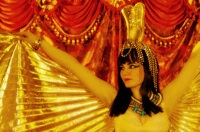
The Pharaonic Village
This living museum is a fabulous attraction for the whole family to enjoy. Visitors sail down a network of canals in motorised barges where a cast of actors and actresses work to recreate ancient Egypt. All the characters from pharaohs and fishermen to slaves and potters are represented, and some moments in history are recreated. Apart from the faithful reproductions of ancient Egyptian buildings, clothing and lifestyles, there's a complete replica of the tomb of Tutankhamen, as well as a number of museums and interactive exhibits covering different periods of Egypt's history.
Exhibits and activities change regularly making it a different experience every visit, but favourites include the mummification exhibit and the Cleopatra exhibit. There's a small amusement park, a restaurant, shops and an art centre, as well as boat hiring facilities. The experience is fun and educational and will take a family at least a few hours to fully appreciate.
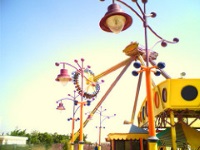
Dream Park
A trip to Dream Park is a must for children of all ages and makes a great day out for the whole family. Featuring rides, shops, fun activities and simulators, the 160-acre Dream Park is also encircled by a train, making access easy. Visitors can enjoy a number of stomach-turning adventure rides, or a selection of mellow family rides, as well as two theatres and one of the largest concert areas in Cairo. Numerous restaurants provide refuelling stops, and there's a selection of gift shops for souvenirs. The Dream Park claims to be the largest and most unique amusement park in the Middle East and can host up to 30,000 visitors. It was designed by the same people who designed Universal Studios.
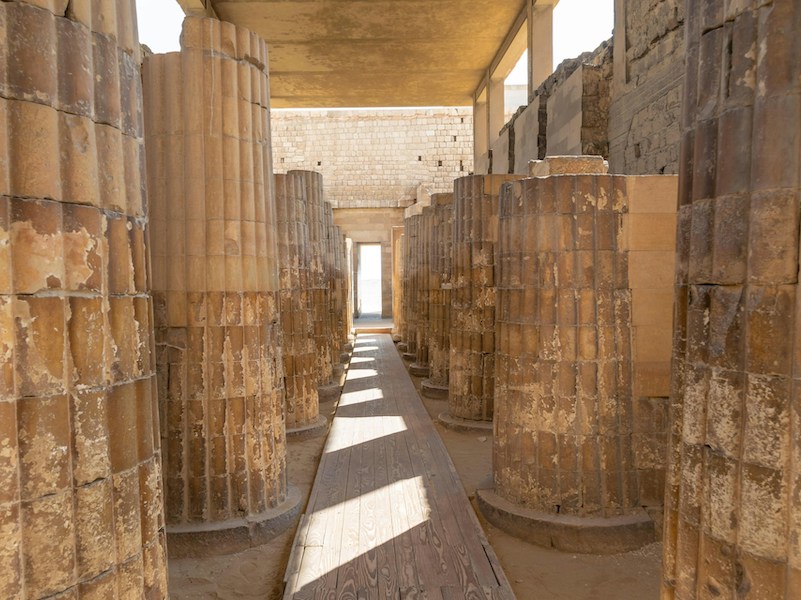
Memphis and Saqqara
Memphis and Saqqara are small towns today, but in ancient Egypt they were great cities and seats of power, a legacy still traceable in the ruins and relics in each. Memphis is home to the Temple of Ptah, which includes the Colossus of Ramses II, a 33-foot (10m) statue near the entrance, and a small museum. Memphis was once the capital of Egypt and visitors can still tell how impressive it once was.
Less than two miles (3km) away is the plateau of Saqqara. Here visitors will find the vast Saqqara Necropolis, which contains many cemeteries, pyramids, mastabas and private tombs, including the Mastaba of Ti, the Pyramid of Teti I, and the Unas Causeway and Pyramid of Unas. One of the most famous structures in Saqqara is the Step Pyramid of Djoser, which is also known as the Step Tomb due to its rectangular base. Travellers will find the Imhotep Museum in Saqqara as well.
Memphis and Saqqara together make a popular excursion from Cairo. There isn't much in the way of entertainment, dining or accommodation at these sites, however, so most visitors don't overnight.
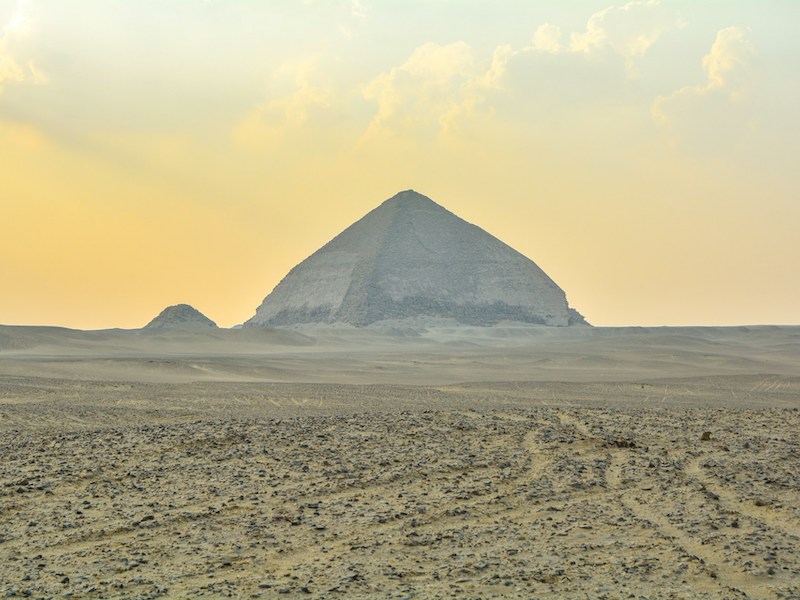
Dahshur
One of the most worthwhile things to see and do in the Cairo area is take an excursion to Dahshur, a royal necropolis in the desert where the oldest true pyramid, the Red Pyramid, can be found. Some of the burial sites and pyramids date back to the Old Kingdom of the 4th dynasty and the Red Pyramid and the Bent Pyramid were built by Sneferu (founding pharaoh of the Fourth Dynasty of Egypt) in about 2600 BC.
The Bent Pyramid is so-called because the angle of its sides isn't quite straight, which is probably the result of an ancient engineering mistake. The Red Pyramid is made out of red limestone and was built after the Bent Pyramid. It's thought to have been the first true, straight-sided pyramid in Egypt. The famous Pyramids of Giza were modelled on this design.
Visitors can usually climb into the Red Pyramid and descend down a tunnelled ramp into its three interior chambers, which is a rare privilege. There are other tombs of interest scattered around the area and visitors can't walk far without stumbling on some wondrous ancient ruin.
Dahshur is about 20 miles (32km) from Cairo and makes for a fascinating excursion from the city. The drive takes under an hour and follows a scenic route that passes through date orchards. Dahshur is far less crowded than most other big tourist attractions and visitors experience far less of the hassle from locals and touts that they do at Giza. At this site travellers can still get the thrill of an explorer discovering something mysterious and ancient.
However, the empty nature of this famous archaeological site is partly due to occasional sectarian violence in the nearby town of Dahshur, so travellers are advised to check out travel alerts to gauge how safe it is before they visit.
Things to do with kids in Cairo
Known for archaeological treasures and vestiges of ancient Egypt, Cairo may not immediately seem like the best place to visit with children. However, parents won't struggle to find some attractions that are perfect for active, curious kids.
Obvious options such as the Great Pyramids of Giza and the Sphinx will amaze visitors of all ages. Riding a camel or Arabian horse round these spectacular attractions is a fantastic activity for the whole family and a good way to keep the kids interested. Older children might enjoy the Egyptian Museum of Antiquities, but a great way to teach the younger ones about Ancient Egypt is to take a barge ride through The Pharaonic Village, where they can enjoy history being acted out. There are plenty of amusement parks in Egypt to enjoy too, such as Dream Park, which has plenty of rides and activities for children.
For days when the heat is scorching and going outdoors with the children is not an option, families can visit an indoor playground or amusement park, such as Magic Galaxy, which offers something for children of all ages and even a baby zone for the youngest visitors.

Egyptian Museum of Antiquities
With over 100,000 artefacts in 107 halls, the Egyptian Museum provides days of exploration. Inside, visitors will find treasures from ancient Egypt that include priceless finery taken from ancient royal tombs, as well as the statue of Khafre (Chephren), which is one of the museum's masterpieces.
The most popular attraction is the Tutankhamun Gallery, where exquisite treasures from the tomb of the iconic Boy King are displayed, including the famous solid gold death mask. Another top attraction is the Royal Mummy Room containing mummies of some of the most powerful Pharaohs in Egypt dating from the 18th to 20th dynasties. There's an additional cost for this room.
The museum also contains collections of artefacts such as coins, papyrus scrolls, scarabs and sarcophagi. There's a cafeteria, bank, post office, gift shop and library at the museum, and taped audio guides are available in English, French and Arabic. Visitors should be aware that photography is not allowed.
Although a trip to Egypt would feel incomplete without a visit to this incredible museum, its location on Tahrir Square means that foreigners must be cautious visiting during periods of unrest. If there are demonstrations on the square it's best to avoid the area.

The Pharaonic Village
This living museum is a fabulous attraction for the whole family to enjoy. Visitors sail down a network of canals in motorised barges where a cast of actors and actresses work to recreate ancient Egypt. All the characters from pharaohs and fishermen to slaves and potters are represented, and some moments in history are recreated. Apart from the faithful reproductions of ancient Egyptian buildings, clothing and lifestyles, there's a complete replica of the tomb of Tutankhamen, as well as a number of museums and interactive exhibits covering different periods of Egypt's history.
Exhibits and activities change regularly making it a different experience every visit, but favourites include the mummification exhibit and the Cleopatra exhibit. There's a small amusement park, a restaurant, shops and an art centre, as well as boat hiring facilities. The experience is fun and educational and will take a family at least a few hours to fully appreciate.

Dream Park
A trip to Dream Park is a must for children of all ages and makes a great day out for the whole family. Featuring rides, shops, fun activities and simulators, the 160-acre Dream Park is also encircled by a train, making access easy. Visitors can enjoy a number of stomach-turning adventure rides, or a selection of mellow family rides, as well as two theatres and one of the largest concert areas in Cairo. Numerous restaurants provide refuelling stops, and there's a selection of gift shops for souvenirs. The Dream Park claims to be the largest and most unique amusement park in the Middle East and can host up to 30,000 visitors. It was designed by the same people who designed Universal Studios.
Eating Out
Diners in Cairo should take advantage of the unique, plentiful and very cheap restaurants serving Egyptian favourites. By sitting down in the neighbourhood café and enjoying some light eats and sweet drinks travellers can easily immerse themselves in the local dining culture. This is also a great opportunity for people-watching and mingling with the locals. Favourite Egyptian meals to try include falafel (made out of crushed fava beans), koshari (a tasty mixture of staples such as rice, lentils, pasta and caramelised onion) and fattah (a meat, bread and rice dish similar to Biryani).
Although Egyptian cuisine is worth investigating and has a lot to offer, some of the best restaurants in Cairo have an eclectic international focus. Once largely restricted to hotel restaurants, everything from sashimi to cheeseburgers is now prepared by top chefs in trendy venues. Even traditional local food is getting a creative twist. Zamalek is the dining hotspot where visitors will find the trendiest restaurants in Cairo. The downtown areas near Khan al-Khalili are great for cheap local haunts.
In Cairo it's considered unclean to eat with the left hand, and visitors should remember that alcohol is usually not served unless at a hotel restaurant. It's good manners for diners to leave food on their plate, as it shows that the host has been generous; it's impolite to stare at another person's food in a restaurant. During Ramadan, when Muslims fast during the day, many restaurants are closed and, again, travellers should head to a hotel restaurant and avoid eating in public.
Shopping
Shopping in Cairo is fun and distinctive, characterised by market haggling and the pursuit of antiques (or, at least, souvenirs that look like antiques). Many visitors to this vibrant city will have a wonderful time just wandering through the souks (markets) and taking in the diverse sights, sounds and smells.
Just about everything can be bought at the largest market in Cairo, the Khan al-Khalili. Most visitors dare not venture deep into the interior as the market can be intimidating, with its very persistent touts and mind-boggling maze of stalls and shops. Bartering is an essential skill when in Cairo and a good rule of thumb is to halve the first asking price and start haggling from there. While haggling, visitors should try to stay unruffled and retain a sense of humour but should still be firm. If visitors feel they aren't getting a good deal it's always a good idea to show their willingness to shop around. The markets, especially those most popular with tourists, are frequented by petty thieves and conmen, so travellers should be on the alert. Women in particular may find that they experience a lot of harassment in Egyptian markets, and it's best to dress conservatively and explore in groups. Many travellers prefer to hire guides to give them tours of the markets and help them negotiate with merchants. Hotels can usually recommend reputable guides for this kind of service.
Popular souvenirs in Cairo include painted papyrus scrolls embellished with hieroglyphics, copper and bronze items, jewellery, carpets and leather goods, which can be found away from the main tourist drags. The quality is normally excellent. The Wekalet al-Balah is a must for lovers of beautiful fabrics and Egyptian cotton.
Opening hours depend on the season, and shops in tourist areas generally keep longer hours. The majority of stores open at 9am and close at 7pm during the winter months, while, during the summer, stores often stay open later but close for an extended lunch hour during the day. Opening hours during summer are usually about 9am to 1pm and 4pm to 9pm. During Ramadan opening times can be disrupted.
Nightlife
Cairo nightlife swirls around the aromatic social centre of the city, the coffee shop. The ahwas, as they are called, are day and night social gathering spots for locals. Many Muslims don't drink alcohol (although some do) and the ahwas serve the same social purpose as the bars and pubs in many other countries; they are great places to mingle or relax and take a break from frenetic Cairo. In the night hours some cafés also sell alcohol to a select local crowd and foreign visitors are usually welcome.
Most large hotels house a pub, bar or large club. These are very popular spots with locals as well as visitors, and bookings for club tables may need to be made in advance. Clubs usually have relaxing lounge or restaurant atmospheres, often centred around a performance of music or dancing. While this can be great entertainment, some belly dancing shows and clubs in Cairo are fronts for prostitution and travellers should be wary. Large hotels have reputable shows as well as popular western-style discos, usually with an Egyptian-themed twist.
Westerners are generally welcomed everywhere, though women should dress a bit more conservatively than they might at home. During Ramadan, alcohol is only served in 'foreigners only' establishments, and drinking and eating in public during the day is frowned upon.
Getting Around
The most efficient and reliable public transport in Cairo is the Metro, which has the added advantage of being very cheap. The route connects Helwan in the south of the city to the north, and there's also a subway line between Giza and Shubra. Two carriages are reserved for women only.
The streets of Cairo are well supplied with taxis, which may have fare meters but are unlikely to use them. Fares vary and should be negotiated up front.
Tourists have complained about some taxis missing seat belts and having broken door handles, and drivers overcharging foreigners. Passengers are advised to inspect taxis and, perhaps, to take a picture of the registration and plates before entering. Threatening to call the tourist police (126) can help in tense situations.
Better still, travellers should rely on Uber as drivers need to maintain a safe, clean vehicle to keep their star ratings up, and there's no haggling involved with the standard fare, which is low. Travellers can use the Uber fare as a benchmark if they find themselves having to negotiate with taxis.
The bus and minibus services operating in the city are considered risky for tourists because of overcrowding and the potential for pick pocketing. Buses also require at least a working knowledge of Arabic to navigate. Driving in Cairo is not for the faint-hearted as few road rules are adhered to, traffic is heavy at all times, and streets are poorly signposted.
Walking is a fairly good option for taking in the atmosphere of Cairo, but travellers should be aware that streets are not marked and it's easy to lose direction. GPS apps and maps on phones can be quite effective when navigating on foot, though travellers should bear in mind that while GPS can help with directions, Cairo's street layout and traffic conditions might still be tricky. Combining GPS with local advice can be very effective.
Cairo Climate and Weather
Egypt has an arid, desert climate and the weather in Cairo is always warm, or hot, and the nights cool. There are only two seasons: a very hot summer, with average temperatures reaching 95°F (35°C) between May and October, and a mild winter from November to April. Cairo is very dry, receiving on average only about a centimetre of rain a year, but it does have high humidity levels in summer due to its location by the Nile River. The city occasionally experiences dust storms in March and April. The best time to visit Cairo is in the cooler winter months between November and April, when the temperatures average between 66°F (19°C) and 84°F (29°C) during the day, and between 41°F (5°C) and 52°F (11°C) at night. December, January and February are the most popular months to visit as they are the most comfortable and visitors avoid both the worst of the heat and the chance of desert winds and sandstorms.
Egypt travel info
Electricity
Electrical current is 220 volts, 50Hz. European-style two-pin plugs are standard.
Language
Arabic is the official language though English and French are spoken in tourist areas.
Money
The unit of currency is the Egyptian pound (EGP), which is divided into 100 piastres. All major credit cards are accepted in midrange and high-end establishments. Banks are usually closed on Friday and Saturday, but money can officially be changed at foreign exchange bureaux (forex) and some hotels. Cairo branches of the Egyptian American Bank and Banque Misr have ATMs available that accept Visa, MasterCard and Cirrus and are quite common in the main tourist areas.
Tipping
Tipping is known as 'baksheesh' and a gratuity of 10 to 15 percent is expected for most services. 'Baksheesh' can be a useful practice in order to gain entry to seemingly inaccessible places, or for extra services. A service charge is added to most restaurant and hotel bills but a tip of about 10 percent is normally given directly to the waiter. Taxi drivers are tipped about five percent.
Health
A yellow fever vaccination certificate is required for entry into Egypt from travellers over nine months of age coming from infected areas. No other vaccinations are required but vaccinations are commonly recommended for hepatitis A, hepatitis B and typhoid. Travellers to Egypt should come prepared to beat the heat with a high factor sunblock and drink plenty of water to combat dehydration. Tap water in the main cities and towns is normally chlorinated but it's still advisable to drink only bottled water or tap water that has been boiled or filtered. Visitors should only eat thoroughly cooked food and fruits they have peeled themselves to prevent travellers' diarrhoea. The waters of the Nile are contaminated and should not be consumed.
Medical treatment can be expensive and standards vary (private and university hospitals are excellent; others are patchier) so comprehensive travel health insurance is strongly advised, including evacuation insurance. Medical facilities are generally adequate for routine ailments in the big cities and main tourist areas but outside of the main centres medical facilities can be very basic in Egypt.
Safety
The US Department of State and the British Foreign Office advise caution when travelling to Egypt, as there's a high threat from terrorism. All travel is advised against in North Sinai. All but essential travel is advised against in South Sinai, though the area within the Sharm el Sheikh perimeter barrier (including the airport, Sharm el Maya, Hadaba, Naama Bay, Sharks Bay, and Nabq) is protected by enhanced security measures and has experienced little violence. The resort areas in Hurghada have similar measures in place, although isolated incidents in non-tourist areas have been reported. Other areas under travel advisories include the border with Libya and swathes of Egypt's western desert (west of Cairo and the Nile Valley). Travellers should stay up to date on travel warnings and advisories.
Terrorist attacks have been ongoing, with several bombings taking place in Cairo and other regions in the last few years. Attacks against tourists have been reported.
Demonstrations are common near foreign embassies and around Tahrir Square in Cairo, and in other cities, including Alexandria. There have been incidents of foreigners, including British Nationals, being targeted and attacked during protests. There have also been reports of sexual assaults on women during demonstrations. Tourists are advised to avoid all street protests and gatherings and not to attempt to cross roadblocks.
Visitors to markets and major tourist sites will experience a fair amount of hassle from touts and are advised not to carry more money on them than needed, as petty crime is a concern. Women should be extra cautious when travelling alone as incidents of harassment and sexual assault are not uncommon. Women should be particularly alert when visiting spas and doing other tourist related activities, and should be careful to dress conservatively. Racism towards black and Asian people is prevalent and considered acceptable. Egypt also has a poor train safety record with several fatal accidents each year.
Local customs
Egypt is a conservative society and visitors should respect local customs and sensitivities. Homosexuality is solemnly frowned upon and homosexual acts are illegal. Public displays of affection are frowned upon. Religious customs should be recognised, particularly during the month of Ramadan when eating, drinking and smoking during daylight hours is forbidden by Islam. During Ramadan travellers should be discreet in public places or choose to partake in the custom themselves. Travellers to Egypt should dress modestly (women's clothes should cover the legs and upper arms). Photography of military institutions is prohibited and the Suez Canal counts as a military institution. Egyptians can be sensitive about any photography of infrastructure and it's best to ask for permission if in any doubt.
Doing business
Egyptians are friendly and approachable at work, and personal relationships are very important when conducting business. Business is usually conducted formally in Egypt. However, meetings may not take place in private and it is normal for them to be interrupted with other matters. Punctuality is important for visitors doing business, though foreigners shouldn't be surprised if their contact is late or postpones the meeting. It's important to remain patient. Dress should be formal and conservative; suits and ties are standard and women should dress modestly. Women may encounter some sexism in the business world. Most Egyptians are Muslim, so business people should be mindful of Islamic customs. English is widely spoken and understood, although attempting to speak some basic Arabic will be highly appreciated. The normal working week runs from Sunday to Thursday. Business hours vary, but in the private sector they are usually 9am to 5pm and in the public sector, 8am to 3pm. It's wise to avoid scheduling business trips during the month of Ramadan as working hours are minimised during the holiday period and many key players will not be available.
Duty free
Travellers over 18 arriving in Egypt do not have to pay customs duty on 200 cigarettes or 25 cigars or 200g tobacco; one litre of alcoholic beverages; and perfume for personal use. The import and export of local currency is limited to EGP 5,000. Banned items include firearms, cotton and drugs.
Communications
The international access code for Egypt is +20. Most hotels, cafes and restaurants around major tourist centred areas provide free WiFi access. International calls made from hotels have high surcharges; travellers can cut costs by purchasing local SIM cards. Travellers can also use eSIMs if their cellular providers support it on their networks.
Passport & Visa
A yellow fever vaccination certificate is required to enter Egypt, if travellers are arriving from or transiting through infected areas. Persons without a valid yellow fever certificate, if one is required, will be subject to quarantine. The wives and children of Egyptian men are exempt from visa requirements up presentation of a birth certificate, passport or National ID Card of the relative. The same applies to the children of Egyptian women if they were born after 25 July 2004. It's highly recommended that travellers' passports have at least six months' validity remaining after the intended date of departure from their travel destination. Immigration officials often apply different rules to those stated by travel agents and official sources.
Entry requirements
US citizens must have a passport valid for six months beyond the period of intended stay in Egypt. A visa is required for stays exceeding 15 days. However, tourists arriving at Sharm El Sheikh (SSH), Saint Catherine (SKV), or Taba (TCP) airports and staying in the Sinai resort area only for up to 15 days do not require a visa. Visas can be obtained on arrival for a maximum stay of 30 days. E-visas can be obtained online at www.visa2egypt.gov.eg.
British citizens must have a passport valid for six months beyond the period of intended stay in Egypt. A visa is required for stays exceeding 15 days. However, tourists arriving at Sharm El Sheikh (SSH), Saint Catherine (SKV), or Taba (TCP) airports and staying in the Sinai resort area only for up to 15 days do not require a visa. Visas can be obtained on arrival for a maximum stay of 30 days. E-visas can be obtained online at www.visa2egypt.gov.eg.
Canadian citizens must have a passport valid for six months beyond the period of intended stay in Egypt. A visa is required for all stays. E-visas can be obtained online at www.visa2egypt.gov.eg.
Australian citizens must have a passport valid for six months beyond the period of intended stay in Egypt. A visa is required for stays exceeding 15 days. However, tourists arriving at Sharm El Sheikh (SSH), Saint Catherine (SKV), or Taba (TCP) airports and staying in the Sinai resort area only for up to 15 days do not require a visa. Visas can be obtained on arrival for a maximum stay of 30 days. E-visas can be obtained online at www.visa2egypt.gov.eg.
South African citizens must have a passport valid for six months beyond the period of intended stay in Egypt. A visa is required for all stays. E-visas can be obtained online at www.visa2egypt.gov.eg.
Irish citizens must have a passport valid for six months beyond the period of intended stay in Egypt. A visa is required for stays exceeding 15 days. However, tourists arriving at Sharm El Sheikh (SSH), Saint Catherine (SKV), or Taba (TCP) airports and staying in the Sinai resort area only for up to 15 days do not require a visa. Visas can be obtained on arrival for a maximum stay of 30 days. E-visas can be obtained online at www.visa2egypt.gov.eg.
New Zealand citizens must have a passport valid for six months beyond the period of intended stay in Egypt. A visa is required for stays exceeding 15 days. However, tourists arriving at Sharm El Sheikh (SSH), Saint Catherine (SKV), or Taba (TCP) airports and staying in the Sinai resort area only for up to 15 days do not require a visa. Visas can be obtained on arrival for a maximum stay of 30 days. E-visas can be obtained online at www.visa2egypt.gov.eg.
Useful contacts
Egyptian Tourist Authority: egypt.travel/
126 (tourist police); 122 (police); 123 (fire and medical emergencies)


